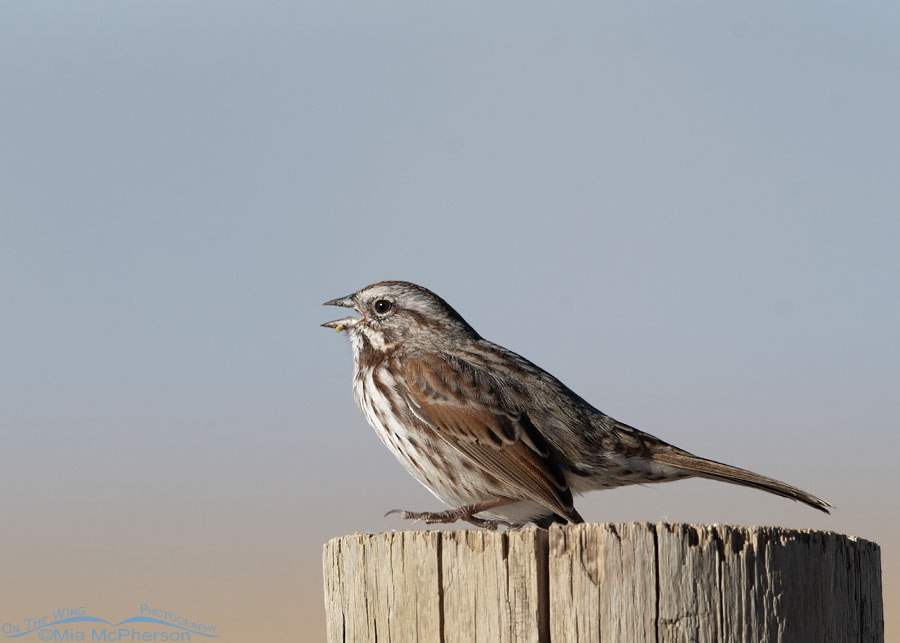The last time I visited Farmington Bay WMA, I was enchanted by the song of a singing Song Sparrow perched on a wooden post in soft morning light.
 Singing Song Sparrow on a post at Farmington Bay WMA – Nikon D500, f8, 1/1600, ISO 500, Nikkor 500mm VR with 1.4x TC, natural light
Singing Song Sparrow on a post at Farmington Bay WMA – Nikon D500, f8, 1/1600, ISO 500, Nikkor 500mm VR with 1.4x TC, natural light
I had almost forgotten that I had taken a nice series of this singing Song Sparrow until I opened the folder the images are stored in.
Song Sparrows are abundant in northern Utah. I see them most often in marshy areas that surround the Great Salt Lake and high in the mountain ranges. I’ve also found them on Antelope Island and desert scrublands. I’ve also found them close to home at city parks and green spaces along the Jordan River.
I feel very fortunate to be able to see, hear, and photograph this sparrow species year-round.
More often than not, their songs and calls help me locate this sparrow species. In my experience, I have found them to be a little quieter during the colder months of the year. I thoroughly enjoy listening to their songs on cold winter mornings, though.
Females of this sparrow species are able to pick out and prefer their mate’s songs to those of neighboring birds. I can relate; personally, I favor certain dialects of the English language over others myself.
While some people have trouble identifying this species, I do not. The only time I’ve stumbled a bit with identifying this species was when I found a leucistic Song Sparrow at Farmington Bay WMA this fall. I was certain the leucistic bird was a Song Sparrow but started second-guessing myself. At the end of the day, I was correct about the ID of the sparrow.
I adore these birds.
Life is good.
Mia
Click here to see more of my Song Sparrow photos plus facts and information about this species.


Perfect shot. I love the lines of the shapes in the pic and the detail in the sparrow is, of course, exquisite. Thanks Mia.
A small charmer. Thank you.
Quite a little beauty! Didn’t realize how lovely this variety is!—Jeri S.
Very nice image of this Song Sparrow and those in your linked posts. This species can vary quite a bit in the hue and intensity of its brown color. I remember seeing one in Oregon which was nearly red. I first thought it was a Fox Sparrow.